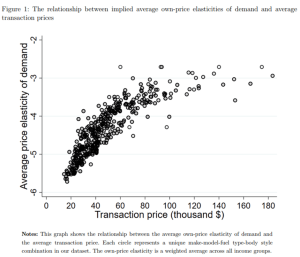New
Getty Images
The S&P 500 SPX has rallied since Silicon Valley Bank collapsed last month, but stock investors are kidding themselves if they think the banking crisis is over.
In fact, the current crisis looks far more serious than is evident. This warning comes from a newly published study of 800 years of banking crises, which suggests that both the U.S. economy and stock market will be below-average performers for some time to come.
The study, entitled “The March 2023 Bank Interventions in a Long-Run Context,” was conducted by Andrew Metrick of Yale’s School of Management, and Paul Schmelzing of Boston College and Stanford’s Hoover Institution. They based their conclusions on a comparison of the current crisis with an enormous database they constructed that encompasses close to 2,000 banking-sector interventions in 138 countries back to the 13th century. The database contains data not only on the severity of each crisis but also the range of policy actions that banking regulators took in response.
This database allowed the professors to reverse-engineer a conclusion about the severity of the current crisis. As Schmelzing put it in an interview, “We don’t directly know how bad things really are right now in the banking system. But we can look at the behavior of the regulators who presumably know a lot more than we do about how bad it is. And the pattern of their responses most closely matches that of 57 prior crises that tended to more severe than average.”
One data point that is particularly revealing about the current crisis’ severity is the magnitude of banking regulators’ recent interventions. For example, the combined value of the emergency lending that the Swiss National Bank extended to Credit Suisse
CS,
and to UBS
UBS,
UBSG,
which acquired Credit Suisse, is equivalent to more than 25% of that country’s GDP. That’s one of the biggest interventions in the professors’ entire database; the median intervention’s magnitude, for example, is just 1.5%.
The interventions so far by U.S. banking regulators to guarantee deposits are far smaller as a fraction of U.S. GDP. But they still are the second-largest in U.S. history, second only to the 2008 financial crisis guarantees. They could easily become the largest guarantee operation in U.S. history, assuming that deposit guarantees in excess of the $250,000 FDIC limit are extended — as is being contemplated — to the U.S. banking sector more broadly.
The professors believe it’s most unlikely that interventions of these magnitudes would have been undertaken if the banking system were not already in the early stages of what they term a “systemic” distress event.
Knowing the current crisis is particularly severe doesn’t tell us how it will unfold, but, Schmelzing said, serious banking crises “play out over many months, if not years. It’s far too early for investors to say that the crisis is over.”
Mark Hulbert is a regular contributor to MarketWatch. His Hulbert Ratings tracks investment newsletters that pay a flat fee to be audited. He can be reached at mark@hulbertratings.com
Plus: No regulation or law can fix incompetent bank management, former FDIC chief says
This post was originally published on Market Watch






